Formulation / Melting
The first step is to melt gold with minute amount of silver and copper. Silver and copper are blended because 99.99% gold is too soft to be pounded into thin leaf.
The melting pot is heated to 1,300 Centigrade and gold, silver and copper are added.
Wait for 10 - 15 minutes to completely melt, and pour into the molds to shape.
The melting pot is heated to 1,300 Centigrade and gold, silver and copper are added.
Wait for 10 - 15 minutes to completely melt, and pour into the molds to shape.
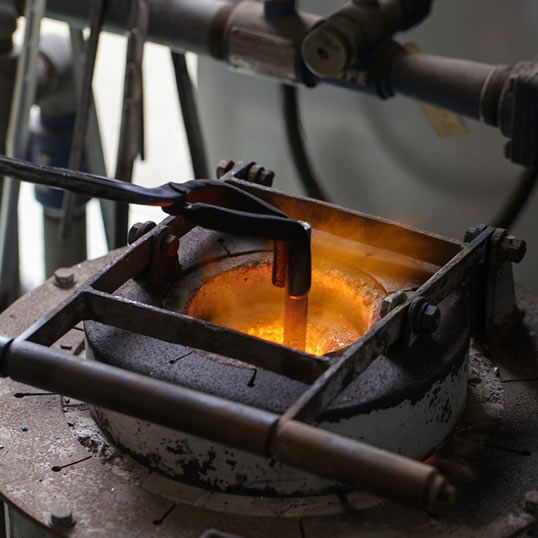


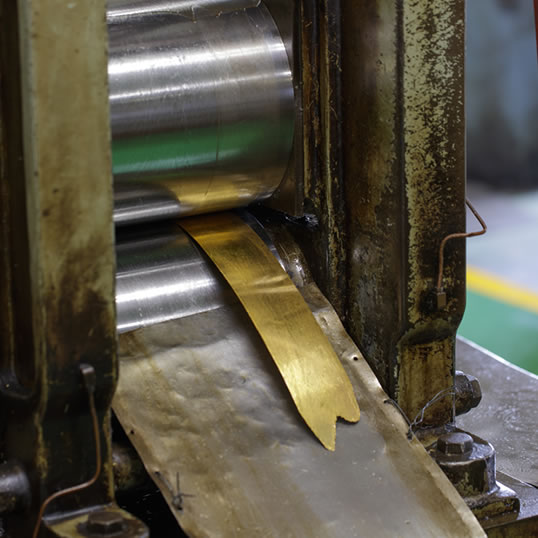

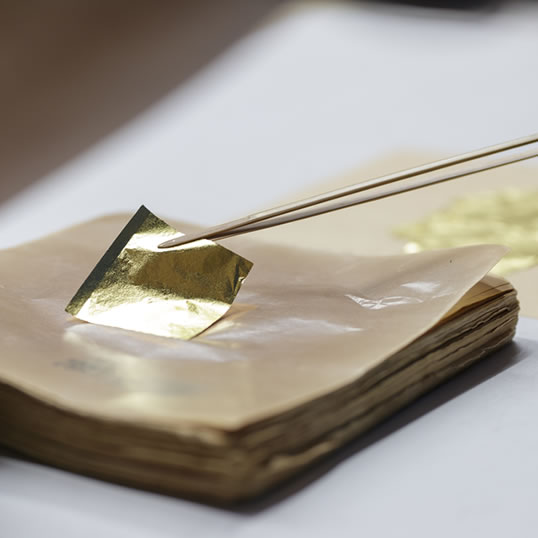
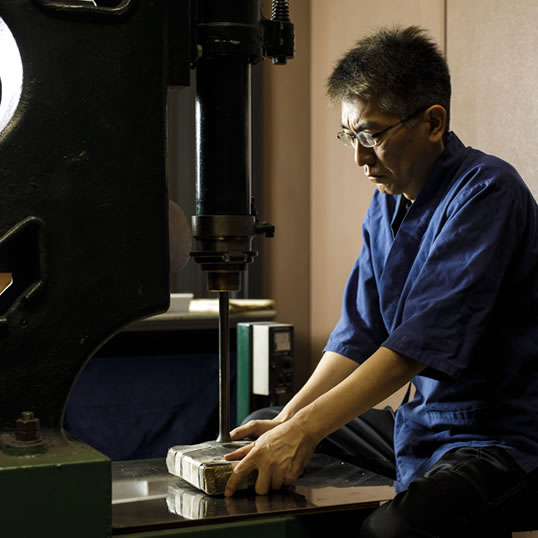
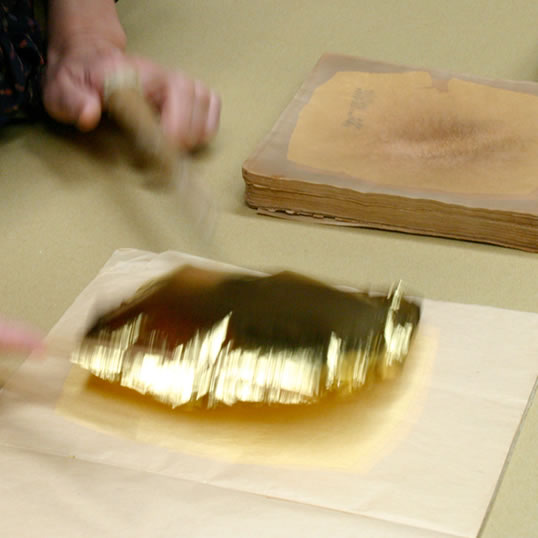
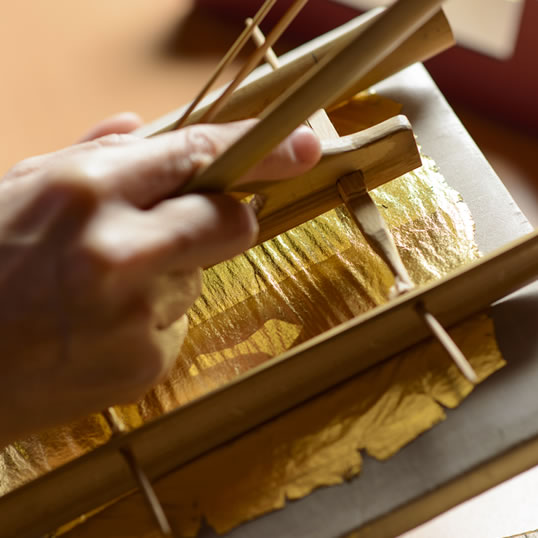
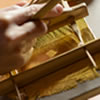


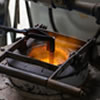
 Tourist Facility HAKUKOKAN
Tourist Facility HAKUKOKAN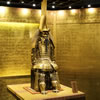 See
See Taste
Taste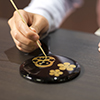 Experience
Experience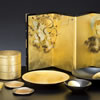 Buy
Buy Product/Service
Product/Service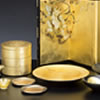 Gold Leaf Craft
Gold Leaf Craft Cosmetics and Oil Blotting Paper
Cosmetics and Oil Blotting Paper Edible Gold Leaf
Edible Gold Leaf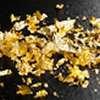 Metal Leaf Material
Metal Leaf Material